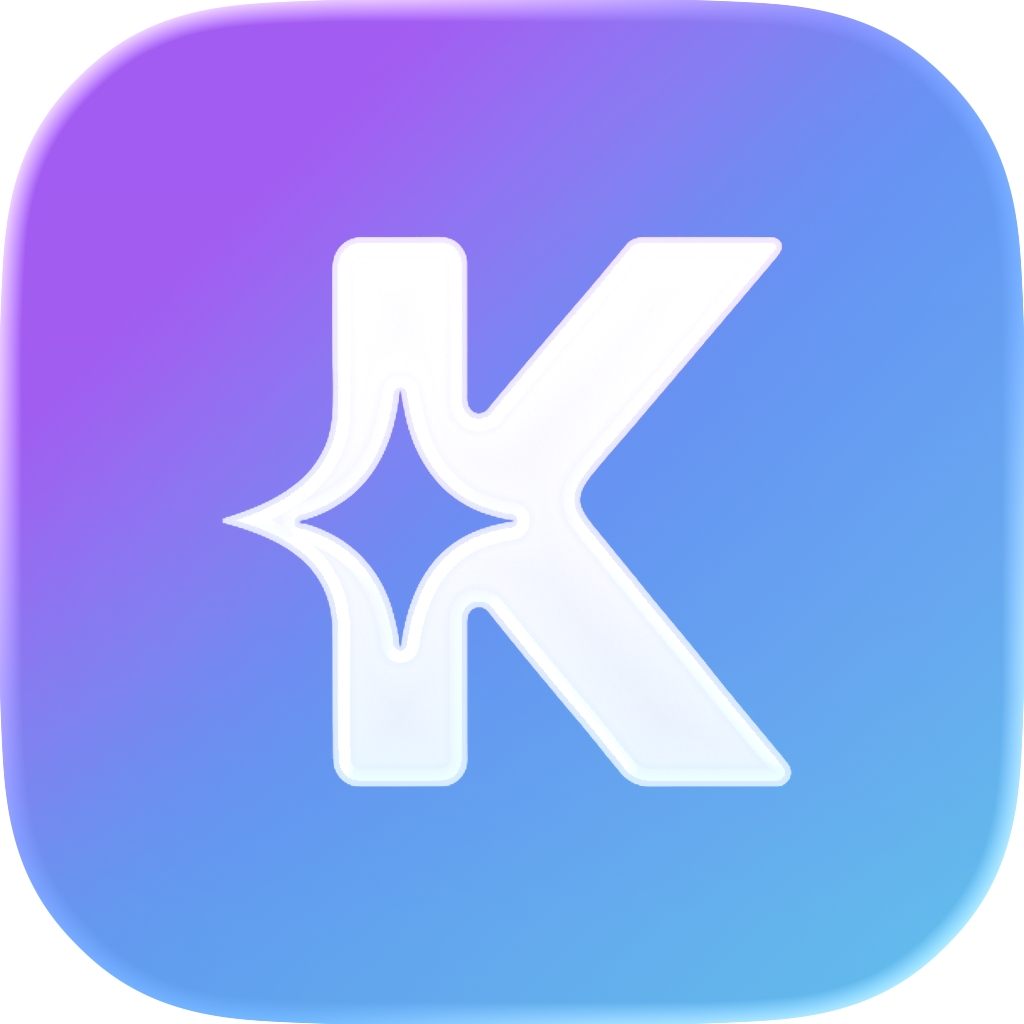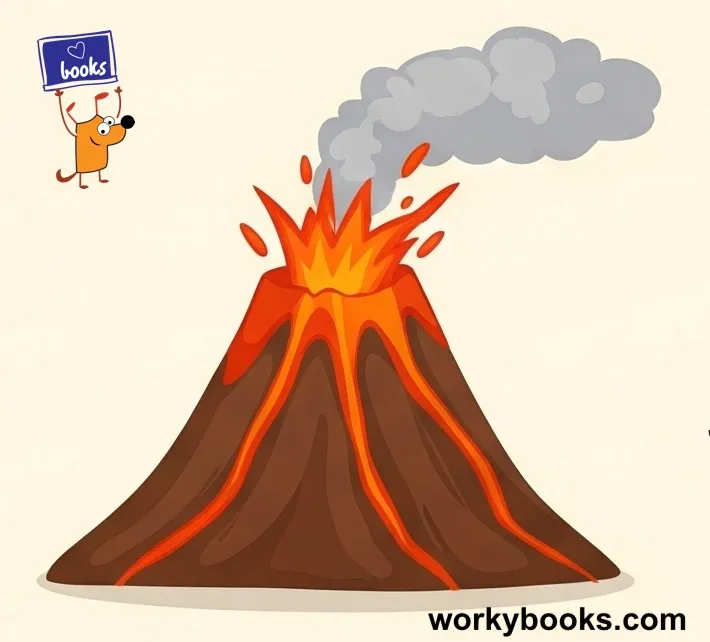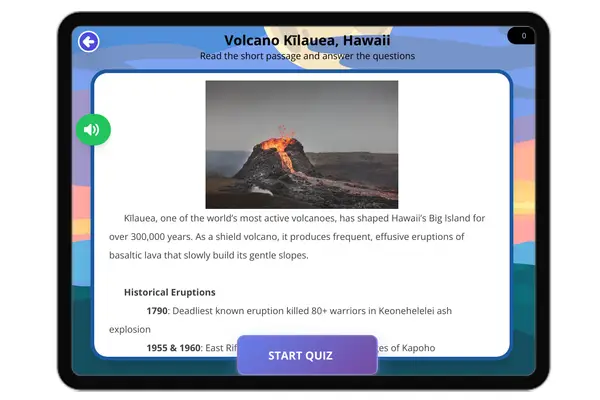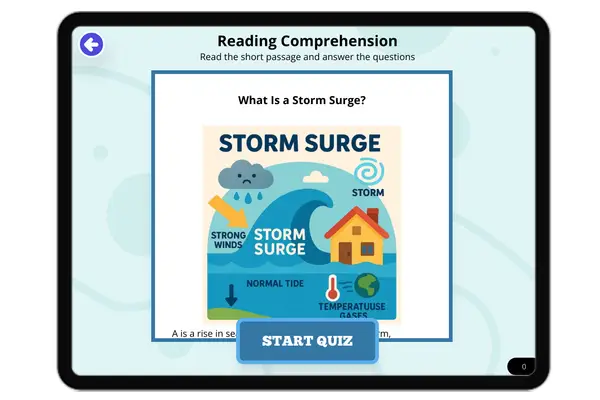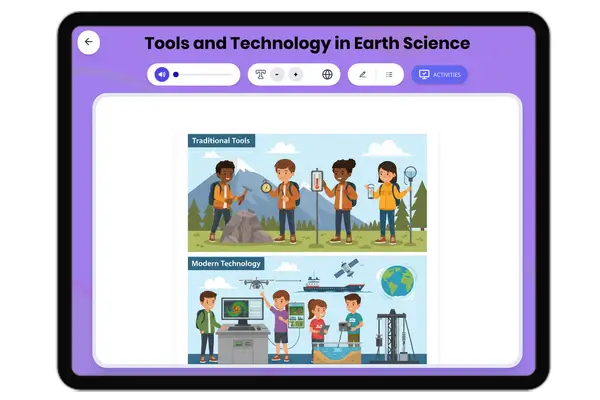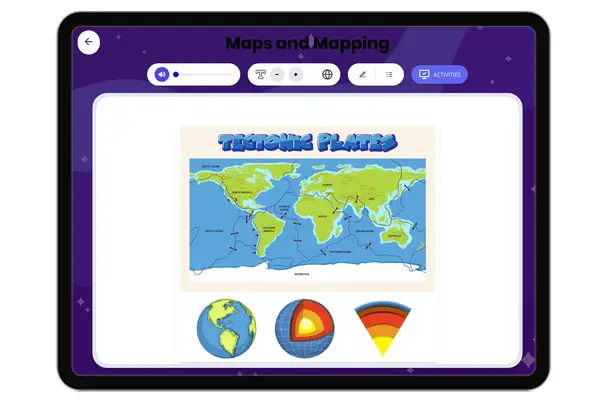Volcanic Eruptions: Causes, Types, and Key Features — Reading Comprehension
Premium Resource
Grades
- 5
- 6
- 7
- 8
Standards
- MS-ESS3-2
- MS-ESS2-2
- RST.6-8.3
PRINT+DIGITAL RESOURCE
This learning resource is available in interactive and printable formats. The interactive worksheet can be played online and assigned to students. The Printable PDF version can be downloaded and printed for completion by hand.
About This Reader
This science passage explains volcanic eruptions, aligned with NGSS MS-ESS3-2 (natural hazards) and ESS2-2 (Earth’s systems). It covers plate tectonics, eruption types (effusive/explosive), and impacts like Pompeii’s destruction and geothermal benefits. Examples include Kīlauea and Mount St. Helens. The text meets CCSS.ELA-LITERACY.RST.6-8.3 for cause/effect analysis and connects to monitoring technology and climate science.
Perfect For:
👩🏫 Teachers
- • Reading comprehension practice
- • Auto-graded assessments
- • Literacy skill development
👨👩👧👦 Parents
- • Reading practice at home
- • Comprehension improvement
- • Educational reading time
🏠 Homeschoolers
- • Reading curriculum support
- • Independent reading practice
- • Progress monitoring
Reading Features:
📖
Reading Passage
Engaging fiction or nonfiction text
❓
Comprehension Quiz
Auto-graded questions
📊
Instant Feedback
Immediate results and scoring
📄
Printable Version
Download for offline reading
🔊
Read Aloud
Voice-over with word highlighting
